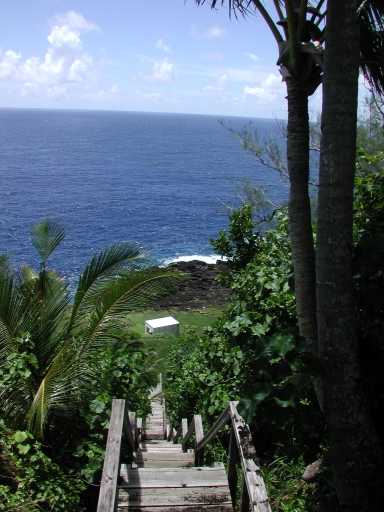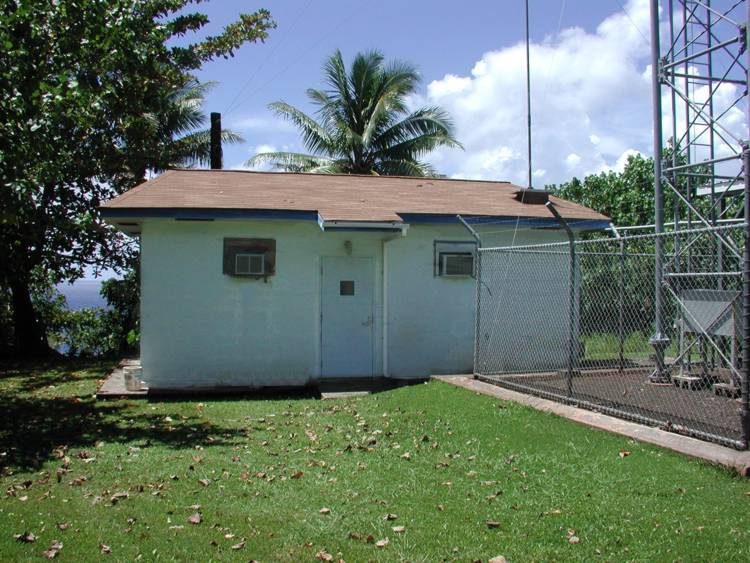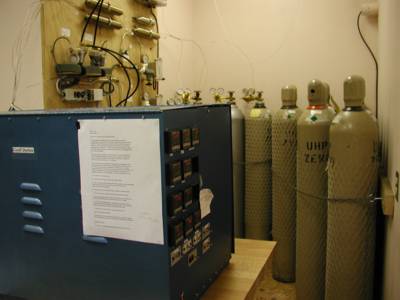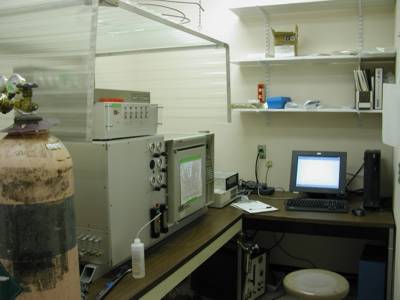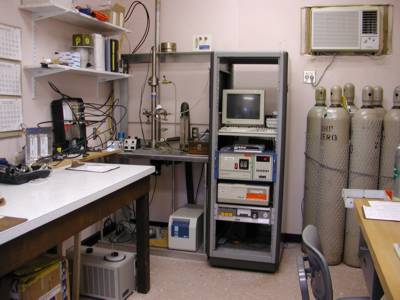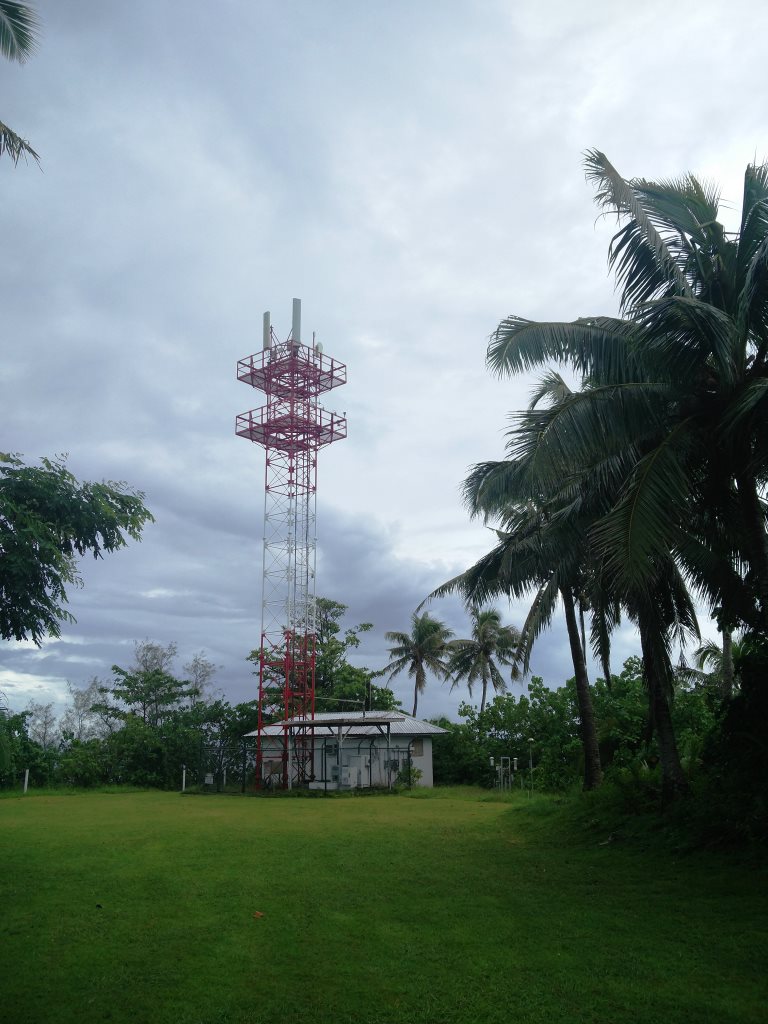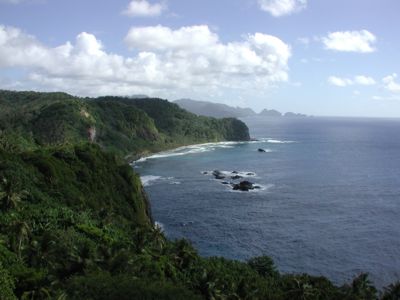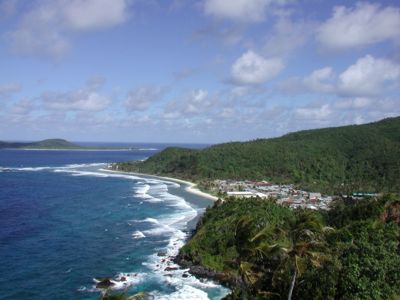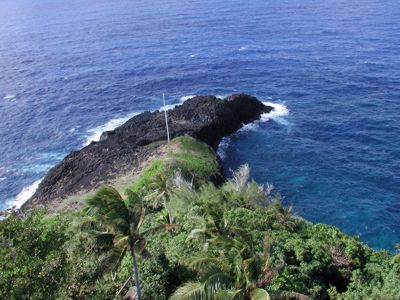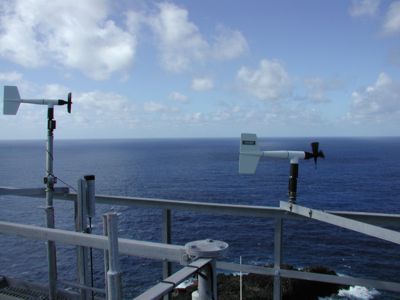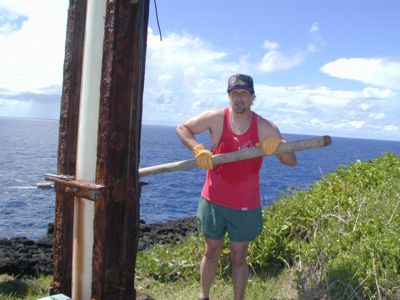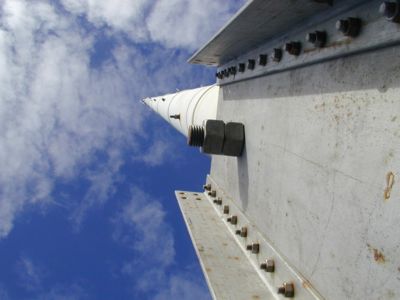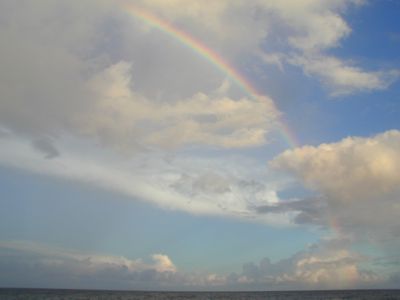American Samoa Observatory Tour, Around the Grounds

Hudson Building
The Hudson Building was completed December 1996. It currently houses the GML Chromatograph for Atmospheric Trace Species (CATS) and the cooperative Advanced Global Atmospheric Gases Experiment (AGAGE) instruments for halocarbons, the Pollak for aerosols, the Dasibi and TEI monitoring surface ozone. The building is divided into three rooms. One contains an air compressor, the other two instruments. To see inside the Hudson Building continue down the page. (Photo by P. Roberts)
The NOAA GML CATS instrument. A four channel automated GC that runs 24 hours a day, 7 days a week. The instrument is currently operated to detect 14 species of halocarbons targetted specifically as climate forcing agents.
The cooperative AGAGE instrument. This GC also operates 24 hours a day, 7 days a week targeting similar species. The two systems are part of a scientific comparison.
Along with the CATS instrument are the TEI, surface ozone instrument, seen in the rack next to the gas cylinders, and the Pollak, aerosol monitor, to the left of the TEI. The black unit seen against the left wall is the pumping unit for Scripps Institute of Oceanography.for O2 flask monitoring.
Roof Top
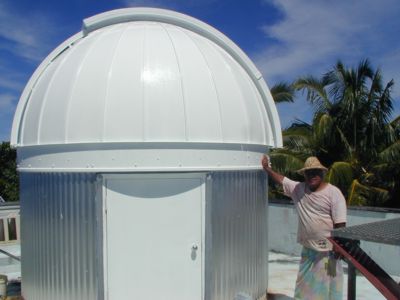 |
Lafaele Silao and Dobson Dome. In December 1998 this dome replaced the
previous dome and coated with rust preventative paint. (Photo by J. Michalski) |
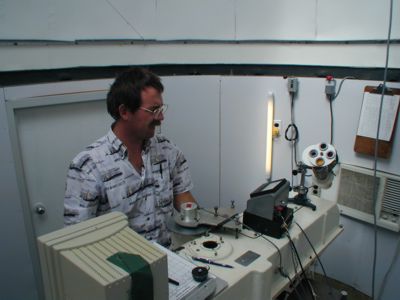 |
Malcolm Gaylord, station electronics engineer, inside the Dome conducting
Dobson Measurements. The total ozone values recorded by Dobson values for
American Samoa between 2000 to 2002 ranged from 220-250 DU uncorrected values.
For more total ozone information see: Insert NOAA GML Ozone page here.
(Photo by J. Michalski) |
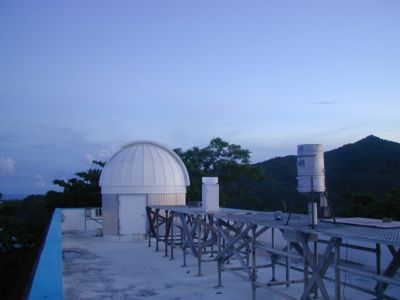 |
South end of rooftop at dusk. Visible back to front are the Dobson dome, the DOE Cooperative project: , and the GML tipping rain rain gage. The peak located in the background is Olomoana Mountain at 1,074 feet. (Photo by P. Roberts) |
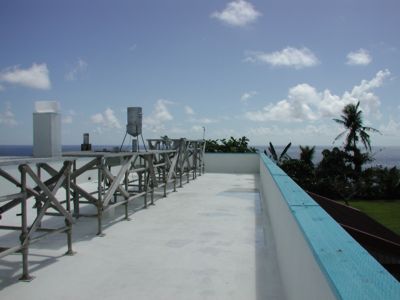 |
North end of rooftop. The north end of the rooftop is the location of the solar instruments. These continuously monitoring instruments inclued:
For more solar information see GML's Solar Radiation
Page. |
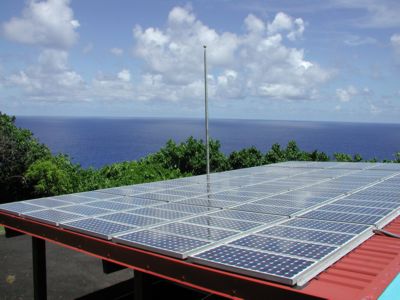 |
Solar panels located on carport. These panels were removed from their
historic location on the southeast side of the observatory, refurbished
and reinstalled as a cooperative project between NOAA, American Samoa Community
College, American Samoa Power Authority, the Territorial Energy Office,
and Starkist Inc during 2001. (Photo by P. Roberts) |
American Samoa Observatory Tour
Around the Grounds: Bluesky Tower
From the vantage point of the tower:
Around the Grounds: Stairs & the Point
